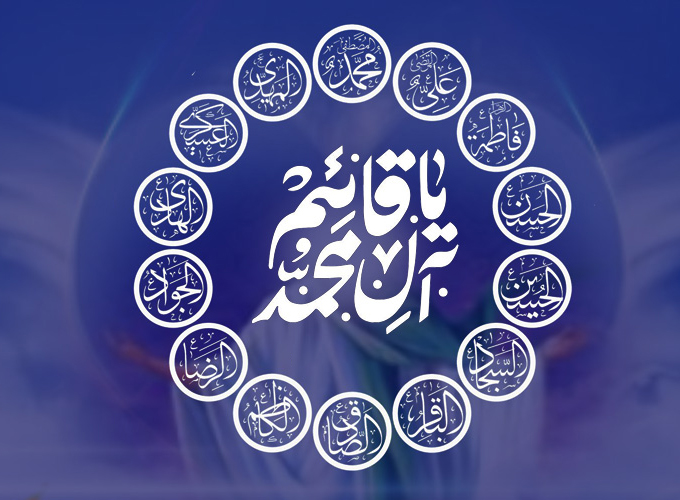Some religious or philosophical concepts are pivotal, and are interpreted in a particular way as Doctrine. For instance, 'Dukkha' ("Suffering" or "sorrow") in Buddhism is so important that is called 'the Doctrine of Dukkha or the Doctrine of Buddha'; or 'Maya' ("imaginary world") is a fundamental concept in Hindu phi¬losophy, which construes as 'the Doctrine of Maya'.
Mahdiism is one of the tenets, which is of high significance in Islam. It is in conformity with 'Soteriology', 'Salvation', and 'Millenarianism', presented in other religions. The notion of salvation and Mahdavi global government are the matter of concordance among the whole Islamic sects, and their authentic books of traditions, such as Sihah al-Sittah ("Six Correct Books"), refer to them under four titles: 1. Al-Mahdi's Book; 2. Al-Fitan Chapter ("The Calamities"); 3. Al-Malahem Chapter ("The Disturbances"); 4. Ashrat al-Sa`ah ("The signs of the End Times"). Although there may exist some slight differences among the Islamic sects on the conditions of Mahdiism, yet none of them feel doubt about its principals and certainty.
Moreover, the frequency of subjects on the issue of Mahdiism in the theological contexts of both the Shi`a and the Sunni branches of Islam signifies that it is one of the joint issues in the Islamic tenets, having been verified by the whole Islamic sects. Although the issue of Imamate and Caliphate is the most vulnerable matter of difference in the history of the Shi`a and Sunni, arising from their difference on the first Imam or Caliph, the Reappearance of Imam Mahdi (May God hasten his appearance) or the 'Doctrine of Mahdiism' puts an end to all their differences and brings about the unity and unanimity of all Muslims. Thus, as stated in the holy Quran, Imam Mahdi (May God hasten his appearance) manifests the return of whole matters to God7 as well as the transformation of whole nations in one nation.8
The 'Doctrine of Mahdiism' signifies a series of teachings, based on Mahdiism, which can be used to present applied ways and theoretical approaches in different fields both before and after the age of appearance. In Muslims' mind, the 'Doctrine of Mahdiism' is an organizing feature, which has presence in theorization and mental role models.
Throughout the history, the Shi`as have always utilized the 'Doctrine of Mahdi¬ism' for theorizing the government, the rulers' criteria, and the way to manage the society in the age of occultation. The Islamic scholars and jurisconsults, on the other side, studied the 'Doctrine of Mahdiism' as an Islamic tenet and paradigm. To study the subjects, including government, guardianship, Caliphate, and the rulers' crite¬ria in the age of occultation, they have always invoked the traditions on Imamate, Mahdiism, and Imam Mahdi's qualities. Unfortunately, the 'Doctrine of Mahdiism' has only been applied in this field while its impact on other fields, such as the phi¬losophy of history, the philosophy of politics, social sciences, social management, economics, organizational behavior, social affairs and relations, enforcement of law, anthropology, and psychology has been neglected. In Islamic view, Imam Mahdi's appearance settles all these fields; however, the 'Doctrine of Mahdiism' has been already employed in political and governmental aspects.
Like a cardiac patient who shall always care about his diet, rest, exercise, jour¬ney, etc., one shall consider the 'Doctrine of Mahdiism' in all aspect of his life. Mahdiism is as the heart of the Islamic thought; thus, it shall always be in the center of all aspects of man's life.
After the Imamate of Imam Mahdi (May God hasten his appearance), the issue of Mahdiism in religious thought gains higher significance, compared with the other Islamic beliefs, and the whole official and non-official interpretations, presented by religions and creeds, give way to the Divine interpretation. This is one of the impacts of Mahdiism, which puts an end to the whole religious diversities, and thereafter, Mahdiism is the only lens, through which the whole Islamic tenets, including Monotheism, Prophethood, Resurrection, etc., are viewed. It is noteworthy to mention that one of the features of Mahdiism makes it even superior to the Prophethood; that is: completing and integrating the whole prophets' mission throughout man's history, making unity among the entire teachings of the prior religions, presenting a pure interpretation on the religious be¬liefs, and verifying the absolute certainty of this religious ideal.
Impacts of the Mahdiism Doctrine:
A political, scientific, and theological doctrine is deemed to present comments and applied ways on a series of issues in question so as to improve man and the society. Now central to this discussion is the question: Is the 'Doctrine of Mahdi¬ism', as a theological and discourse premise, able to achieve this end? To answer the question, the writer intends to study the 'Doctrine of Mahdiism' from the standpoint of anthropology and sociology in two stages, i.e., before and after the age of appear¬ance. Thus, in this section, the impacts of the Mahdiism Doctrine are examined in four stages, as follows:
1- Anthropological standpoint:
1-1. The anthropological impact of the Mahdiism Doctrine before the age of appearance.
1-2. The anthropological impact of the Mahdiism Doctrine after the age of appearance.
2. Sociological standpoint:
2-1. The sociological impact of the Mahdiism Doctrine before the age of appearance.
2-2. The sociological impact of the Mahdiism Doctrine after the age of appearance.
1. The impact of Mahdiism Doctrine from the anthropology standpoint:
The whole anthropological schools are deemed to take man's desires, interests, limits, and ultimate goals into consideration and respond to his demands, such as peace of mind, hope, content, joy, etc. Like religions, the great contemporary schools of anthropology and even psychology endeavor to respond to man's needs and mental health, and in some ways, compete with religions. To this end, the great psycholo¬gists employed various approaches. For instance, Sigmund Freud proposed the the¬ory of subconscious sexual feelings; Alfred Adler propounded the theory of Power; and Victoria Frankel concentrated on the meaningfulness of life. In their way, Hin¬duism and their techniques had a major influence on their views.
The great existential philosophers also strived to respond to man's questions on life, and accordingly, proposed some ways. A number of them, including Jean-Paul Sartre, Simone de Beauvoir, Albert Camus, and Franz Kafka held an atheistic view toward life so that Camus and Kafka regarded life senseless and futile in one hand, and on the other hand, Sartre considered life as the childlike joy and gaiety, and death as the end of world while negating the Day of the Last Judgment. Camus lik¬ened life to a rolling stone, rolled up and down the hill by man, day in, day out. Since life is a matter of repetition, Camus believed, it is futile and senseless. However, he enjoined that man should endure this circumstance and avoid any withdrawal.
In his theory, Sartre presented a negative and hostile image of God and the world. He was of the opinion that God's omnipotence circumscribes man's will since he had conceived man's relationship with God as the relationship between a master and his slave, in which the existence of the master lapses the slave's free will. He then viewed each man as an isolated being, cast into an alien world but is free to choose his own destiny. These existential and atheistic philosophers endeavored to respond to the angst of man, frustrated by the Second World War, Science, and Church. Ow¬ing to their hostility to the Church, they cut their relationship with God and negated His existence. Then, they tried to cherish high hopes in man's heart through reliance on his own talent and free will, regardless of the religious premises. This mainstream is evidently perceived in the works of the philosophers, artists, and thinkers, especially after the Second World War. On the contrary, other existentialists, including Soren Kierkegaard, Karl Jaspers, and Gabriel Marcel endeavored to respond to man's questions through metaphysical and spiritual ways. In their view, man's relationship with God is as the relationship between the lover and the beloved. They believed in man's inner faith, spiritual facets, and his ultimate goals, and to gain salvation, they enjoined divinity, faith, and the Day of Last Judgment on their followers.
Some religions, in their moral tenets and teachings, have affiliation to the anthro¬pological schools in studying man's concerns through a humanitarian angel. For in¬stance, Hinduism strives to respond to man's questions toward life in a positive way. Buddhism, which has affected some contemporary philosophers and psychologists, including Arthur Schopenhauer, Friedrich Nietzsche, Martin Heidegger, etc., is to set man free from his mental angst and illusion through Meditation. The success of these creeds in affecting the mentioned philosophers and psychologists was due to the common people's demand for humanitarian values.
Now, in the Islamic tenets and 'Doctrine of Mahdiism', this question is posed: Are the Mahdavi teachings able to present an effective way for terminating man's concerns? Admittedly, man's perfection is one of the greatest ideals of Abrahamic religions, and the Divine prophets are to help man blossom his potentials under the protection of Divine teachings, which consider man's honor and all aspects of his nature. In this article, we study whether Mahdavi insight can present a true response to man's internal questions.

















